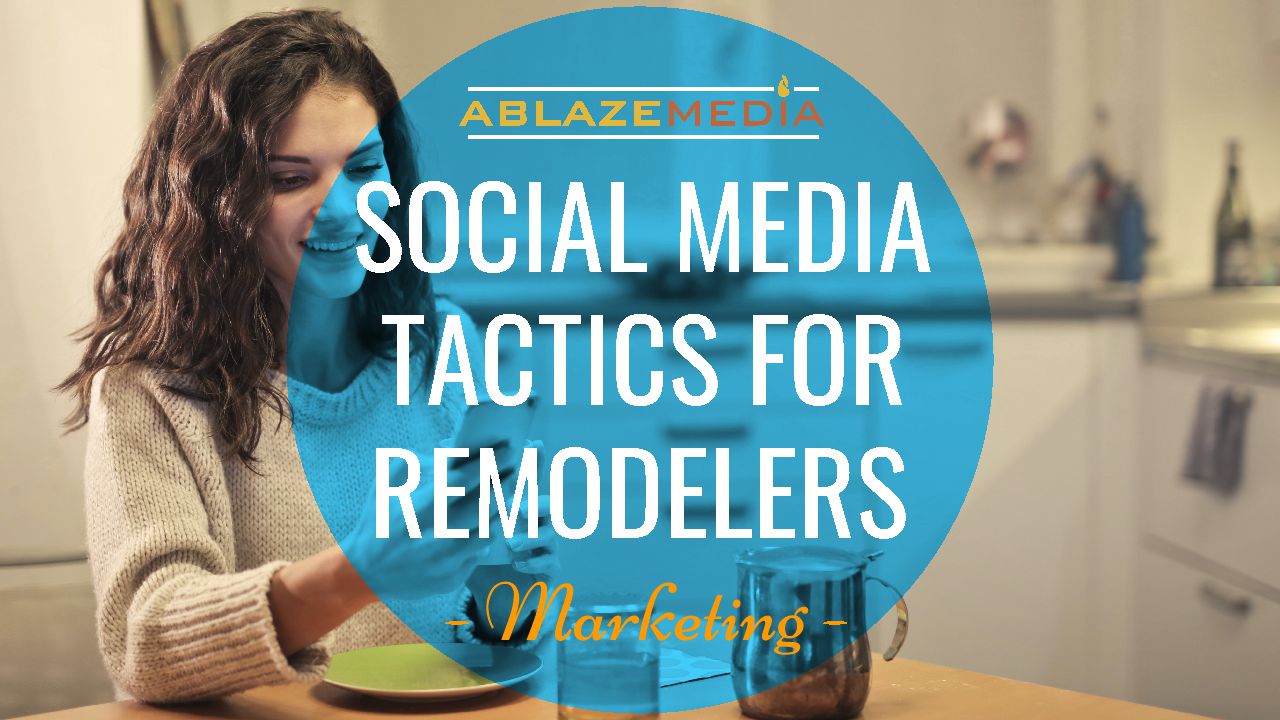Maximizing the 20% of Advertising Opportunities that Actually Work for Remodeling Contractors
Contractors run up against an advertising problem all the time. They are bombarded with account executives that promise that their publication or website or radio station or digital marketing service is the one that will be the magic bullet that drives customers to their businesses.
Over time, many contractors get frustrated with their efforts and give up. They figure that they’ll just rely on whatever comes in ‘word of mouth’ because 80% of their media purchases don’t seem to be bringing clients into the door. So how do you know what is working?
The 20% Question
So if 20% of your ads are working, how an a contractor identify the 80% that is not working? What ad buys and marketing products actually work for remodeling contractors? How can you know for sure what advertising works for remodeling contractors?
We have been doing a fair share of research to come up with an answer to the 20% question. What if a remodeling contractor could spend most of their ad budget on 20% that works?
Recent studies are showing that a cross-platform campaign strategy using a proper website, email, online pay-per-click ads and a small local print presence is deadly effective. Add to that content marketing, an SEO service and blogging, and a remodeler will begin to dominate the marketing space in their community. Print is by no means dead and digital is not the only way to go.
Things have just changed and strategies have had to adapt. Print has moved over to make room for the explosive rise of digital media and the truth is that digital media has some huge benefits. Today’s contractors will need to leverage both off-line print and online digital strategies to keep ahead of their competitors.
If they don’t they will likely be relegated to the lower-profit word-of-mouth jobs.
Why does digital marketing work for remodeling contractors so well?
- It is inexpensive
- It is exact
- It is interactive
The downside of digital media? It can also feel temporary. Sometimes it feels annoying if it is used improperly and can damage your business. So, let’s talk about how to use it well! But first, some research:
The studies about the effectiveness of print
A few years back, Neilson did a study that looked at the retail sector to see how US consumers arrived at a purchasing decision. The results were astounding in this digital age. Believe it or not, more than half of the consumers surveyed said that they were more persuaded by printed circulars and direct mail than by digital ads.
We suggest to customers that in the long run, pay-per-click ads are not as effective as email marketing, good SEO and content marketing (with good social media cross-posting). However in the short term, pay-per click does tend to drive sales quickly.
Then…The leading metric for digital advertising was not social media ad buys or pay-per-click, as you might expect, but a well written, old fashioned email campaign followed up by a great website.
What can we learn from these studies?
- None of the studies are showing that you should abandon your print marketing strategy for the sake of digital ads. You should change them, but not abandon them. We will suggest that print ads are most effective when they are linked to your internet assets.
- Your remodeling business needs an effective printed advertising method, a great email marketing plan that is supported by a professional website.

Let’s picture your marketing strategy like a train.
The tracks the train sits on is your company branding. Your branding is important and you should not start a marketing campaign until your brand is put together properly.
If you don’t have a logo, a basic visual identity for your business, and basic signage, then you’re not quite ready to start advertising yet. (Try to avoid using a roof as your logo. Thousands of contracts are using a roof logo.)
Marketing is about getting people to look for you in the first place. Our research is showing us that a large percentage of what is working right now for remodeling contractors also happens to be 3 of the least expensive media pieces to develop. So these 3 are a good place to start:
Print, Email and Web are the main engines that are the foundation for a remodeler’s marketing campaigns
Print, email and website are all a part of advertising that works for remodeling contractors. Let’s unpack those a little right now:
A Website that Works for Remodeling Contractors
The home of your brand and your marketing efforts in your website. If you are taking your marketing seriously, your website should look professional. The copy should be written by a trained professional. The content should be tested for optimization. A contact form or number must be above “above-the-fold.” It needs to be easy to navigate, rich in content and maintained often. Word Press is currently the preferred platform for most small business websites.
Print Advertising that Works for Remodeling Contractors
Second, the research is still showing that direct mail, postcards, and magazine ads and printed are hugely effective for contractors if they are done properly. Keeping in mind that your will attract who you advertise to.
- If you advertise in a luxury living magazine, you’ll attract luxury home clients.
- If you advertise in a coupon mailer, you’ll attract bargain shoppers.
- If you advertise in the newspaper, you’ll likely attract older homeowners.
- If you direct mail using EDDM to a community, you will attract more people in that specific community.
Have a professional design 1 piece that is delivered to your target demographic at least 1 time per month. Change the artwork monthly. Offer a new, limited time monthly special. Depending on your industry, these print publications could be:
- Postcards, Direct mail, EDDM
- Glossy local magazine
- Newspaper
Don’t try something just once. Commit to it for at least 6 months and then evaluate its effectiveness.
Email Advertising that Works for Remodeling Contractors
Lastly, develop an email campaign that follows up with new clients and that re-targets previous clients in order to offer them additional services.
- Mail Chimp is an easy-to-use and affordable tool for getting this done.
- An advertising agency (like ours) will likely be using Go High Level.
- Some credit card processors offer a free email re-targeting service as well.
If web, print and email aren’t covered, there is no reason to move on to other, alternative methods of advertising. For some smaller contracting companies, especially owner-operators, this could be all the marketing you’ll need to keep yourself booked.
Content marketing, pay-per-click, broadcast and so-on can be hugely effective, but they will often fall flat is web, email and print are lacking.
Let me offer a few words about how to make just your print, web and email pieces work together for you. Here are a few helpful techniques to drive and track customers from print to digital and vice-versa.
#1 Track it
You need to know if you have an under-performing ad. If you have an under-performing ad it is either because you are using the wrong media or it’s because you have the wrong content. Either way, you need to know if you are getting leads from your advertisements, so make sure to embed a way to track the traffic from your print ads.
We would suggest that in your print advertising, use a URL that is unique to that advertisement (and forward it to you main site) or use a unique phone number that you are able to track. Call Rail is a great service to track phone traffic.
If you don’t get clicks or calls, DROP IT! Unless you build in a way to track, you’ll never know if the advertising it working.
#2 Combine Direct Mail with Online Content
Used together, direct mail and digital can play to the strength of each.
- Digital provides immediacy and a modern edge that print can’t offer.
- Print provides a level of trust and stability that digital can’t offer. Additionally, direct mail lasts longer. It is often left sitting on a counter or a desk for much longer than a digital ad or an email lasts on someone’s computer screen. Remember, direct mail does not face junk filters, unsubscribe buttons and it doesn’t require anyone to opt in.
When a message is coordinated across your digital and print platforms, it can give your digital advertising a seemingly longer shelf life.
#3 Use direct mail to direct people to your website.
Recent studies have shown that direct mail will drive more traffic to a website than social media if people are asked to visit a website by the print collateral.
In our experience, we can almost always see a direct correlation between a spike in website traffic and a well-designed print piece that directs people to visit a website.
Make your website robust, easy to navigate and full of useful information. Then use your print pieces to direct people to the great content on your site.
On your site, make a great offer that requires people to enter in an email address to receive the offer. This powerful combination gives you the opportunity to retarget those leads through a high-impact email campaign later.
#4 Don’t Just raise awareness, always include a call to action on every advertisement
Advertising is too expensive to be passive. An advertisement is a waste of money if it is designed primarily to spread awareness of your logo. I’m a huge advocate of ditching logo awareness campaigns. Remodeling contractors need to attract new jobs all the time and advertisements that sell always have a clear call to action.
- If you want a potential client to use you to remodel a kitchen, show a potential client why you are the best
- If you want to attract new clients to use a new service you’re offering, make them as offer they can’t refuse.
When designing a print piece ask yourself, “What do you want people to do when they see this ad?” People read about 7 words, they look at pictures and they might take 1 action. DON’T WASTE YOUR AD by making the call to action unclear.
Blog posts on your website and expert articles in journals or trade magazines are proper places to develop your brand depth and establish yourself as an expert. A print ad is not the place for passive content, massive logos, or expert articles. Print advertising is for selling a product in 7 words or less with a great picture. We’ll talk more about effective advertising design later in this guide.
#5 Coordinate your efforts
As your organization grows, you could find yourself with a dozen different account executives working for a dozen different media organizations. Plus, you may have multiple designers and producers. They will never naturally be on the same page.
You need to coordinate your advertising efforts on a regular basis. Have regular creative meetings so your media staff remains on the same page.
Managing 2 or 3 media organizations is not too difficult. If you have more than a few media organizations to manage, it might be time to hire an advertising agency. They will help you to evaluate the effectiveness of campaigns, they will help to negotiate contracts, and they typically have reliable sources for design, copywriting and production services.










